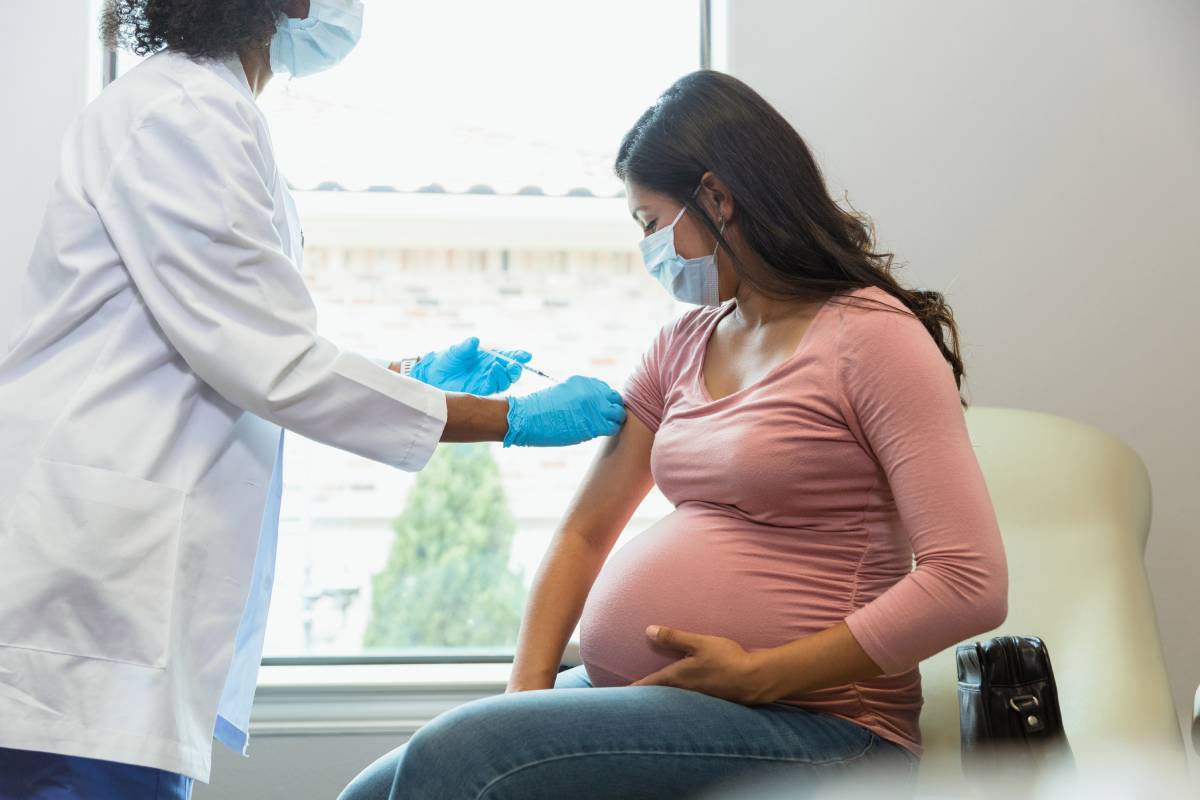Effect of Maternal Vaccination on Birth Outcomes & Early Childhood Immunity
February 5, 2024
Maternal vaccination has been shown to decrease childhood mortality by conferring protection against dangerous infections until babies can be fully vaccinated themselves [2]. Thus, the American College of Obstetricians and Gynecology (ACOG), which sets practice guidelines for obstetricians-gynecologists in the US, strongly recommends that patients stay up to date on their vaccinations during their pregnancy, and specifically that all pregnant patients receive the influenza and tDAP vaccines during every pregnancy [1]. The only vaccines that are contraindicated in pregnancy are live vaccines, such as MMR and Varicella Zoster, due to theoretical risk of transmission to the fetus. However, no congenital infection or birth defects have ever been recorded due to administering live vaccines in pregnancy [1].
The influenza vaccine has been recommended for maternal vaccination since the 1960s and is safe to be given in any trimester, with benefits during both pregnancy and early childhood1. Evidence shows that pregnant patients and infants younger than six months are more likely to experience severe complications of influenza, and thus the vaccine confers dual protection to mother and fetus [2]. While the vaccine alone is thought to be protective against the morbidity and mortality associated with seasonal influenza, it can also be leveraged with other vaccines to improve fetal and childhood outcomes [4]. For example, one of the most common and dangerous complications of influenza is post-viral pneumonia, caused by Streptococcus pneumoniae bacteria4. In one trial performed in Bangladesh, maternal influenza vaccination was combined with fetal pneumococcal conjugate vaccination, which resulted in a significantly lower incidence of acute respiratory illness in neonates, an extremely positive outcome [4].
Furthermore, the influenza vaccine has also been shown to be protective against certain adverse birth outcomes [3]. In one randomized clinical trial performed in Nepal, pregnant patients in the experimental arm of the study were given the influenza vaccine between 17 and 34 weeks of gestation [3]. In this study, there was a fifteen percent reduction in low birth weight in vaccinated patients compared to unvaccinated patients3. While other countries that performed similar trials, such as Mali and South Africa did not find a statistically significant difference in low birth-weight outcomes, the average birth weight in Nepal is lower than in South Africa or Mali, showing that influenza vaccination may have a role in protecting against adverse birth outcomes in particularly vulnerable patient populations [2].
The other maternal vaccination that is recommended is the tDAP vaccine, for its protection against pertussis, or whooping cough, in early childhood [2]. This is important because young infants account for a significant percentage of those affected by severe pertussis [2]. Because this vaccine is to protect the child more than the mother, it is recommended to give the tDAP shot between 27 and 36 weeks gestational age to confer adequate protection from the mother that extends until the child can be vaccinated themselves [2]. The maternal pertussis vaccine is 91-93% effective in preventing childhood pertussis and has not been shown to be associated with adverse birth outcomes, such as preterm birth, low birth weight or small for gestational age babies [3]. There is some emerging evidence in smaller studies that infants of mothers who received the tDAP shot in pregnancy may have a lower antibody response to the infant DTaP shot, however, this effect requires further investigation [3].
Overall, maternal vaccination during pregnancy is safe and confers important protections against disease for both the mother and the fetus in early childhood. Specifically, the tDAP and influenza vaccines are important pieces of prenatal care that all pregnant patients should receive, and both vaccines have a preponderance of evidence regarding their safety and efficacy in this regard [1].
References
1. American College of Obstetricians & Gynecologists. Maternal Immunization: Committee Opinion No. 741. Obstet Gynecol 2018;131:e214–7.
2. Omer, S. B. Maternal Immunization. New England Journal of Medicine, 2017, 376(13): 1256-1267. https://doi.org/10.1056/NEJMra1509044
3. Omer S.B., Richards J.L., Madhi S.A., et al. Three randomized trials of maternal influenza immunization in Mali, Nepal, and South Africa: methods and expectations. Vaccine, 2015, 33:3801-3812. https://doi.org/10.1016/j.vaccine.2015.05.077
4. Zaman, K., Roy, E., Arifeen, S.E., Rahman, M., Raqib, R., Wilson, E., Omer, S.B., Shahid, N.S., Breiman, R.F., Steinhoff, M.C., 2008. Effectiveness of Maternal Influenza Immunization in Mothers and Infants. New England Journal of Medicine 359, 1555–1564.. https://doi.org/10.1056/nejmoa0708630